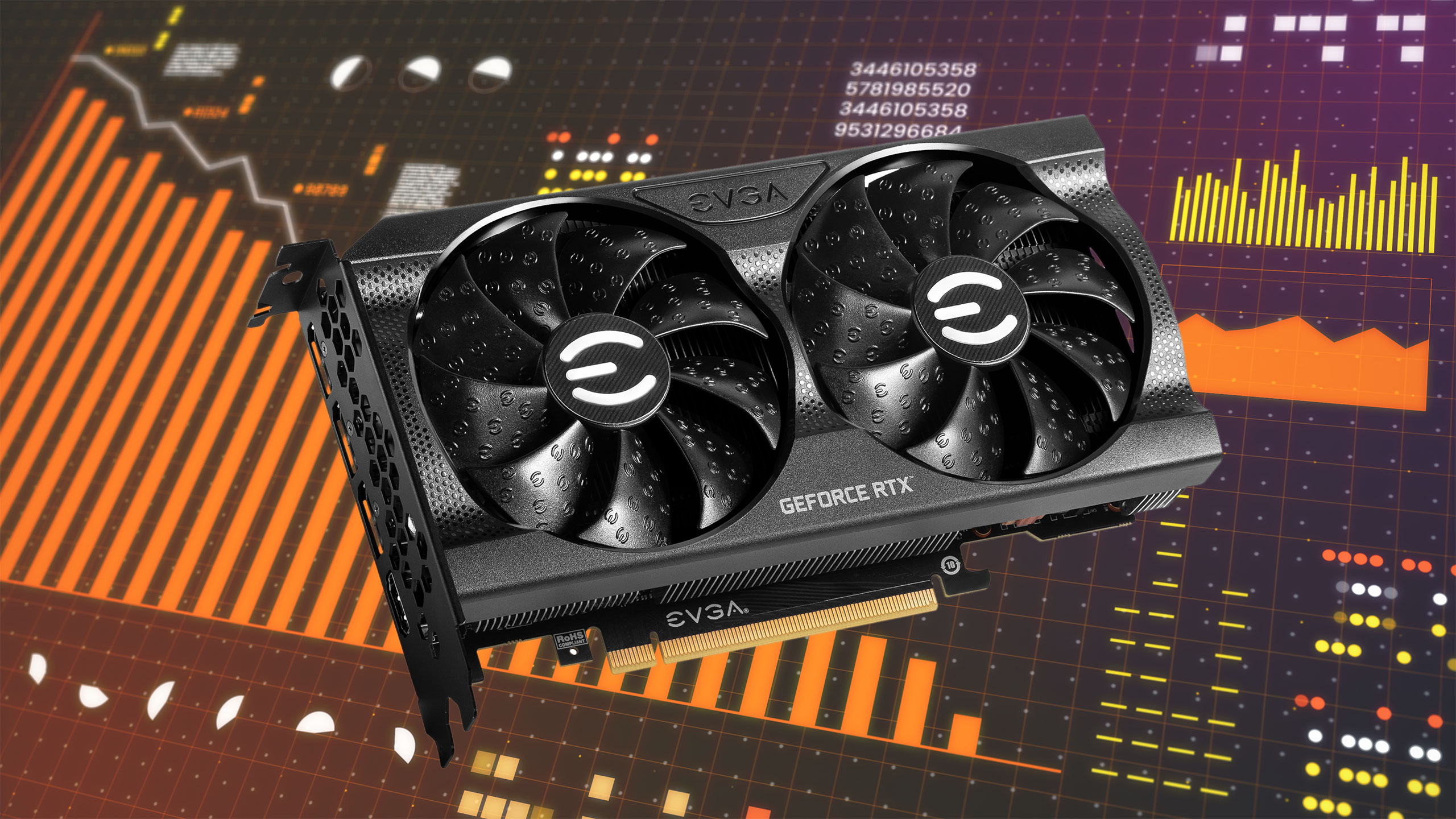Are GPU Prices Really Out Of Control Again?

Table of Contents
Factors Influencing Current GPU Prices
Several interconnected factors contribute to the current volatility in the GPU market. Understanding these factors is crucial for navigating this complex landscape and making informed decisions about purchasing a graphics card.
The Cryptocurrency Market's Impact
The cryptocurrency market has historically had a significant impact on GPU prices. The profitability of mining cryptocurrencies like Ethereum and Bitcoin directly affects the demand for high-performance GPUs.
- Increased mining difficulty: As the difficulty of mining increases, the profitability decreases, leading to a potential reduction in demand for GPUs used in mining.
- The rise and fall of specific cryptocurrencies: The sudden surge in popularity of a new cryptocurrency, or a crash in the value of an established one, can drastically impact the demand for GPUs used for mining that specific currency. The 2018 crypto crash, for example, led to a significant drop in GPU prices.
- The long-term impact of past mining booms: Even after a cryptocurrency's value stabilizes or declines, the lingering effect of past mining booms can impact GPU availability and pricing for a considerable time.
The Global Chip Shortage's Lingering Effects
The global semiconductor shortage, while easing in some areas, continues to significantly affect GPU production and availability. This ongoing issue creates persistent bottlenecks throughout the supply chain.
- Manufacturing bottlenecks: Factories are still struggling to meet the global demand for semiconductors, leading to production delays and limited supply of GPUs.
- Supply chain disruptions: Geopolitical instability and logistical challenges continue to disrupt the supply chain, impacting the timely delivery of components needed for GPU manufacturing.
- Increased material costs: The scarcity of raw materials used in semiconductor manufacturing has driven up costs, directly impacting the final price of GPUs.
- Impact on different GPU manufacturers: While some manufacturers have been more successful in mitigating the effects of the shortage, all major players – including Nvidia and AMD – have felt the pressure.
Increased Demand from Gamers and Professionals
Beyond cryptocurrency mining, the demand for high-performance GPUs is soaring among gamers, content creators, and AI researchers. This surge in demand further exacerbates the supply-demand imbalance.
- The release of new games with high graphical requirements: AAA game titles consistently push the boundaries of graphical fidelity, requiring increasingly powerful GPUs to achieve optimal performance.
- The rise of AI and machine learning applications: AI and machine learning applications heavily rely on powerful GPUs for processing vast amounts of data. This increased demand from the professional sector further tightens the supply.
- The increasing popularity of VR/AR technologies: Virtual and augmented reality applications demand significant GPU horsepower, contributing to the overall increased demand.
Analyzing Current GPU Market Trends
Understanding current market trends provides a clearer picture of the situation and informs predictions about future GPU prices.
Price Comparisons Across Different GPU Models
Analyzing price fluctuations across various GPU models reveals interesting patterns. While high-end GPUs like the Nvidia RTX 4090 and AMD Radeon RX 7900 XTX still command high prices, mid-range and budget GPUs are also experiencing price increases, albeit at a slower rate. Comparing prices from different retailers and analyzing price-to-performance ratios offers valuable insights. (Charts and graphs illustrating price fluctuations over time would be included here.)
- Specific examples of GPU models and their price changes: Tracking price histories for specific models across multiple retailers is crucial for understanding price trends.
- Comparison of prices from different retailers: Price disparities between retailers can be significant, highlighting the importance of price comparison before purchasing.
- Analysis of price-to-performance ratios: Evaluating the performance offered for the price is crucial for determining value.
Availability and Stock Levels
Current GPU availability remains a significant concern. Many models are frequently out of stock, and obtaining certain GPUs can require significant wait times or involve navigating inflated prices on secondary markets.
- Retailer stock checks: Regularly checking retailer websites for stock availability is essential for those looking to purchase GPUs.
- Wait times for pre-orders: Many high-demand GPUs require pre-orders with lengthy wait times.
- The prevalence of scalping and inflated prices on secondary markets: Scalpers often purchase large quantities of GPUs to resell at exorbitant prices on platforms like eBay, exacerbating the issue.
Predictions and Future Outlook for GPU Prices
Predicting future GPU prices is challenging, but analyzing current trends offers some insight.
Short-Term Projections
In the short term, GPU prices are likely to remain volatile. New GPU releases, changes in cryptocurrency mining trends, and improvements in supply chains will all impact prices.
- Impact of new GPU releases: The release of new GPU models often affects the pricing of older generations.
- Potential changes in cryptocurrency mining trends: Fluctuations in cryptocurrency prices and mining difficulty can significantly impact GPU demand.
- Projected supply chain improvements: Improvements in global semiconductor production could ease some supply constraints, potentially leading to lower prices.
Long-Term Outlook
The long-term outlook for GPU prices is more uncertain. Several factors could influence future price stability or continued volatility.
- Technological advancements in GPU manufacturing: Advancements in manufacturing processes could lead to increased efficiency and lower production costs.
- Changes in consumer demand: Changes in gaming trends and the adoption of new technologies could influence overall demand.
- The emergence of new technologies: The emergence of new technologies that might affect GPU usage, such as advanced AI processing units, could reshape the market.
Conclusion
The GPU market remains dynamic and complex. The interplay between cryptocurrency mining, the persistent effects of the global chip shortage, and surging demand from gamers and professionals continues to drive price volatility. While the short-term outlook remains uncertain, understanding these factors is key to making informed decisions. Stay informed about the ever-changing landscape of GPU prices by regularly checking back for updates, and learn how to navigate the market effectively to secure the best deal on your next graphics card.

Featured Posts
-
 Shifting Dynamics A Mets Starters Rise In The Rotation Competition
Apr 28, 2025
Shifting Dynamics A Mets Starters Rise In The Rotation Competition
Apr 28, 2025 -
 Attorney Generals Transgender Athlete Ban Minnesota Under Pressure To Comply
Apr 28, 2025
Attorney Generals Transgender Athlete Ban Minnesota Under Pressure To Comply
Apr 28, 2025 -
 Martinsville Race Hamlins Win Ends Years Of Frustration
Apr 28, 2025
Martinsville Race Hamlins Win Ends Years Of Frustration
Apr 28, 2025 -
 Americas Growing Truck Problem Finding An Effective Antidote
Apr 28, 2025
Americas Growing Truck Problem Finding An Effective Antidote
Apr 28, 2025 -
 Is This Red Sox Outfielder The Next Jarren Duran A Breakout Season Prediction
Apr 28, 2025
Is This Red Sox Outfielder The Next Jarren Duran A Breakout Season Prediction
Apr 28, 2025
Latest Posts
-
 Hotel Transylvania A Complete Guide To The Monster Filled Franchise
May 11, 2025
Hotel Transylvania A Complete Guide To The Monster Filled Franchise
May 11, 2025 -
 The Return Of Happy Gilmore Can Adam Sandler Deliver A Great Comedy
May 11, 2025
The Return Of Happy Gilmore Can Adam Sandler Deliver A Great Comedy
May 11, 2025 -
 To Netflix Jay Kelly Kloynei And Santler Se Mia Tainia Oskar
May 11, 2025
To Netflix Jay Kelly Kloynei And Santler Se Mia Tainia Oskar
May 11, 2025 -
 The Netflix Film Where Adam Sandler Met His Wife A Lasting Tradition
May 11, 2025
The Netflix Film Where Adam Sandler Met His Wife A Lasting Tradition
May 11, 2025 -
 Happy Gilmore 2 Expectations And Potential For Sandlers Comedy
May 11, 2025
Happy Gilmore 2 Expectations And Potential For Sandlers Comedy
May 11, 2025
